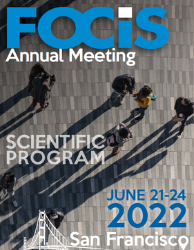Back
Calibrating T Cell ‘Help’ by Antigen Cross-linking as a Universal Vaccine Platform Against Rapidly Evolving Pathogenic Viruses
Thursday, June 23, 2022
1:10 PM – 1:25 PM PT
Location: Salons 3/4
Authors: Vamsee Mallajosyula, n/a (Presenting Author) - Stanford University; Saborni Chakraborty, n/a (Co-Author) - Stanford University; Elsa Sola, n/a (Co-Author) - Stanford University, Institute for Immunity, Transplantation and Infection; Taia T. Wang, n/a (Co-Author) - Stanford University; Cornelia Dekker, n/a (Co-Author) - Stanford University; Holden Maecker, n/a (Co-Author) - Stanford University; Mark M. Davis, n/a (Co-Author) - The Howard Hughes Medical Institute, Stanford University School of Medicine
- VM
Vamsee Mallajosyula, PhD
Postdoctoral Scholar
Stanford University
Stanford, California, United States - YV
Presenting Author(s)
Chair(s)
The effectiveness of the seasonal influenza vaccine is limited by the very heterogeneous immune response it elicits. Factors such as age, sex, and pre-existing antibody titers only partially explain this heterogeneity. We characterized the response in a large cohort (n >500) of healthy, vaccinated volunteers over multiple seasons. Using a novel deconvolution analysis, we observed that a skewed, subtype-specific response that increases with age as a major source of inter-individual variation, exceeding all the previously known factors combined. This “subtype-bias” leads to poor responses to disfavored strains, leaving vaccinated individuals susceptible to infection. Analysis in a twin cohort suggested a genetic basis to this bias that is modulated by exposure history. We determined the source of this genetic component to the wide variation in influenza hemagglutinin (HA) peptide presentation by different HLA class-II alleles resulting in an imbalanced, subtype-specific CD4+ T follicular help (Tfh) after vaccination. To address this, we developed a tunable, plug-and-play vaccine platform to better calibrate T cell help. Using a human tonsil organoid system, we demonstrated that the engineered, cross-linked HA induces a significantly higher response against multiple influenza subtypes in comparison to the inactivated influenza vaccine. In summary, we have developed an effective strategy to overcome response bias in a population with diverse genetic backgrounds and pre-existing immunity. Furthermore, the applicability of the platform to develop “universal” vaccines was tested by generating a pan-coronavirus vaccine.

